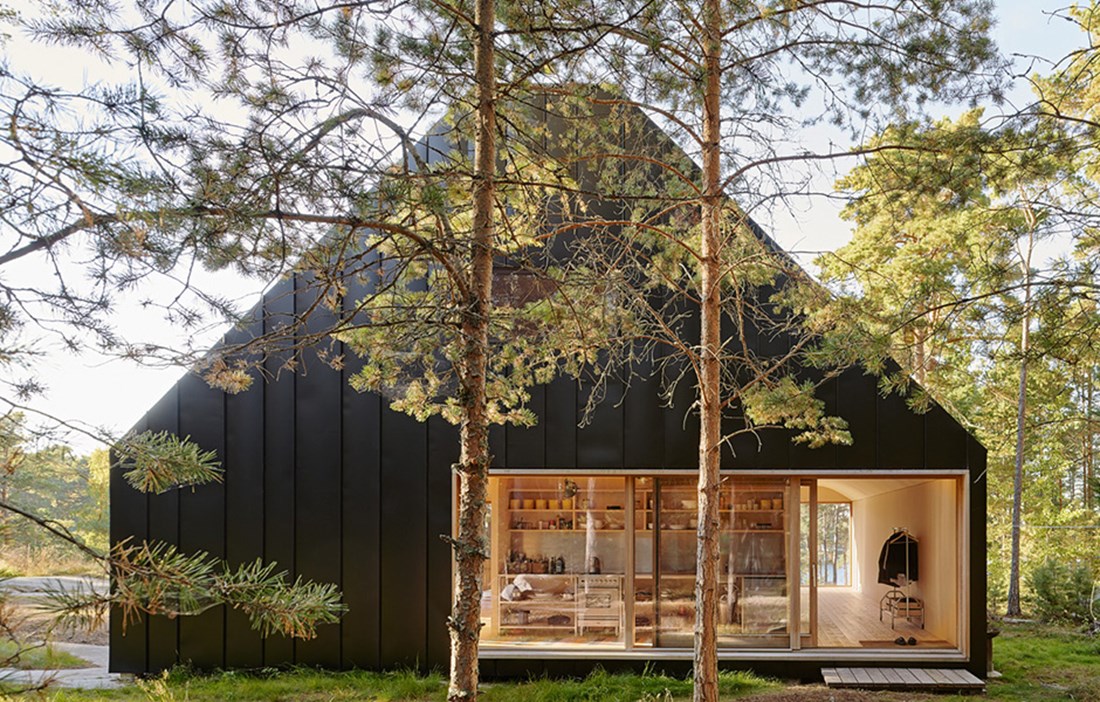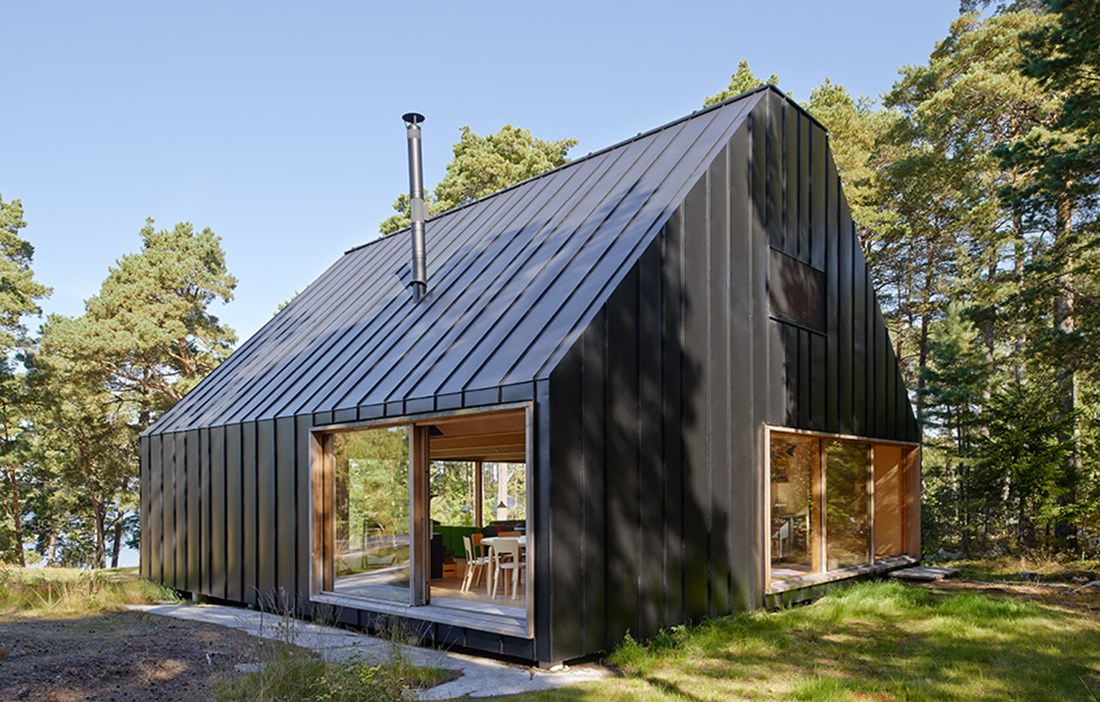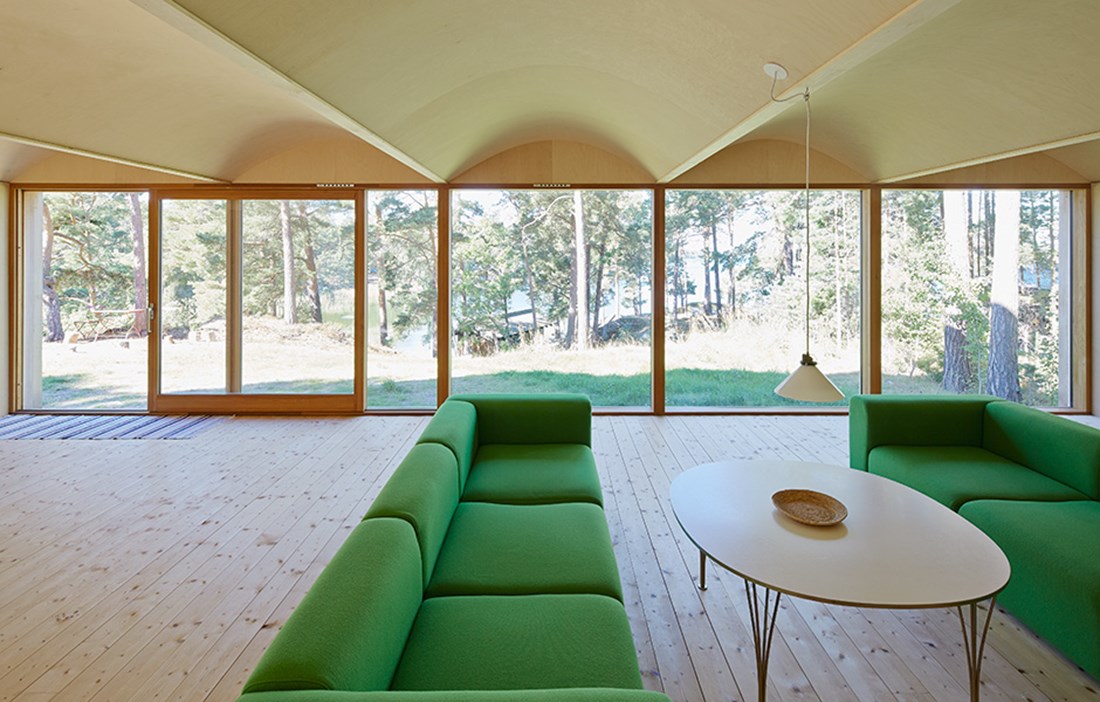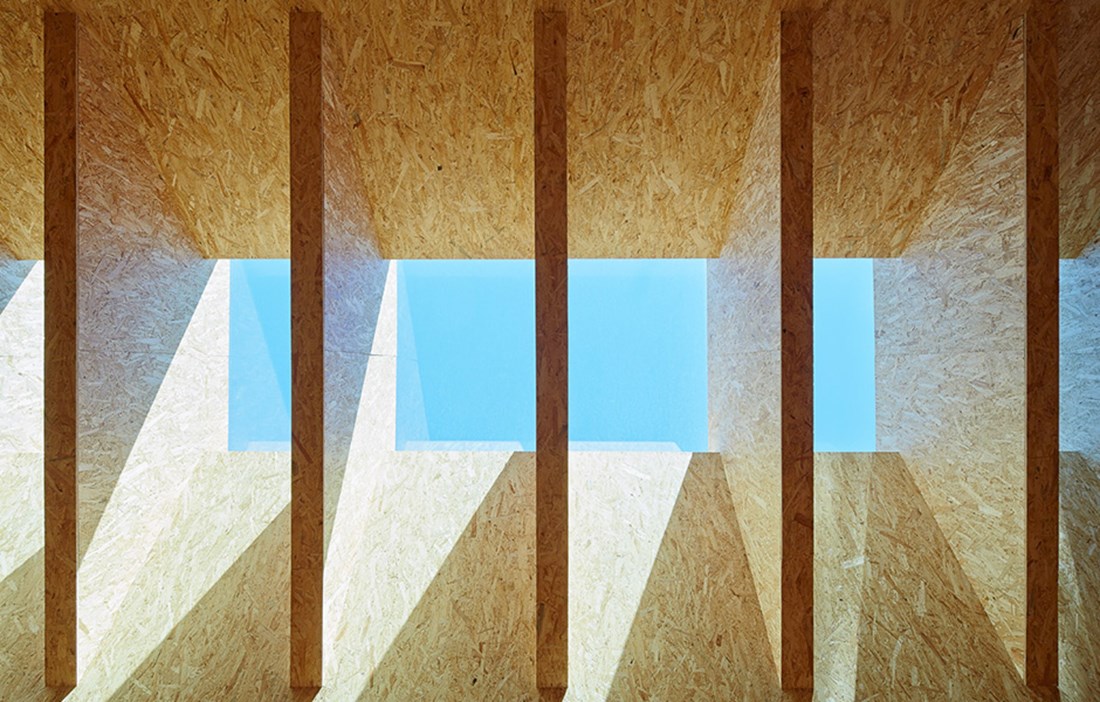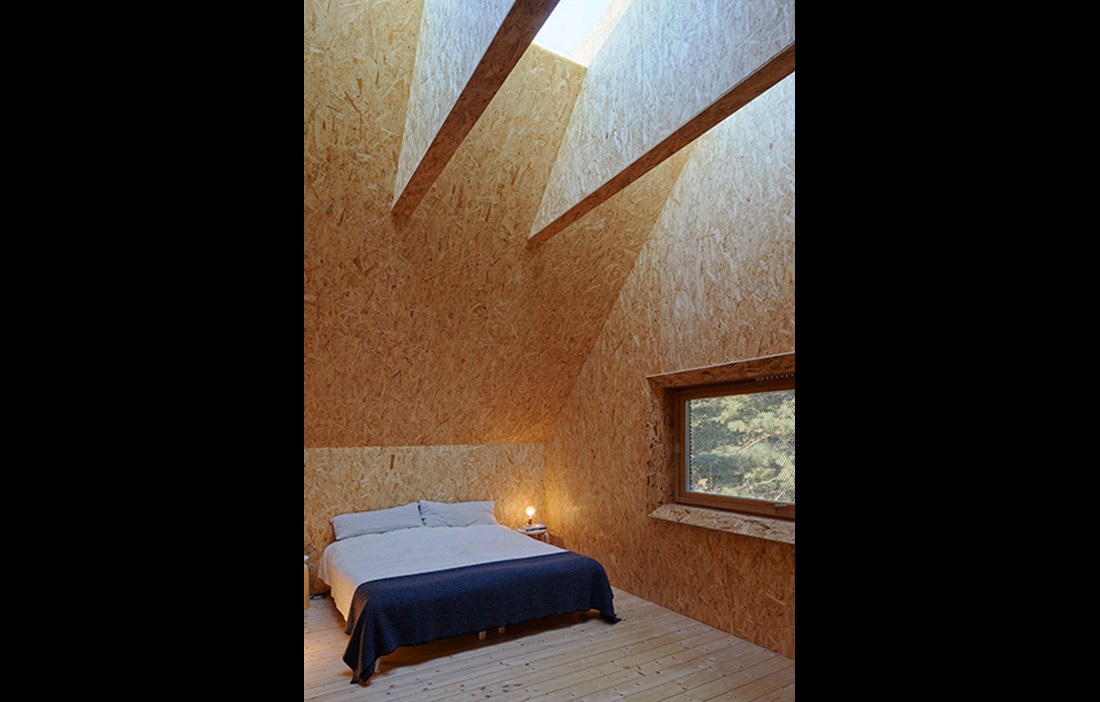TO THE NORTH: the glittering Baltic Sea meets the sky. To the south: a hilly, rural plot among tall pines that filter the rays of the summer sun. On the island of Husarö in Stockholm’s outer archipelago, a 180 square metre summerhouse stands on a large rocky outcrop. The summerhouse belongs to architect Martin Videgård. He spent the summers of his childhood on the island and his father, architect Ragnar Hansson, designed the family’s first summerhouse.
Now Martin Videgård has his own family, a wife and three children, and so his thoughts turned to building a new summerhouse on the plot.
“I’ve always known you could build a larger house up on the hill and I’ve tried sketching out many different designs over the years,” says Martin Videgård.
The Stockholm archipelago has a strong architectural tradition, with nature as its starting point and wood as the obvious building material. For Martin Videgård, the challenge for the summerhouse was to incorporate this attitude towards nature and wood as a material.
“But at the same time, I wanted to make a contemporary interpretation based on modern needs, pragmatic architecture that was fit for purpose, with a distinctive look.
“Keeping to a relatively small budget and making the house practically maintenance free were also guiding factors,” continues Martin.
The building sits at the end of a north-facing inlet on a hilly plot. At the top of the hill is a flat area – an obvious location for the main house. Martin Videgård began designing the house in 2008, and it was completed four years later. One of the challenges, in addition to finding local craftsmen and planning deliveries to a remote location, was to find a rational construction solution that allowed for a distinctive piece of architecture.
THE STRUCTURAL FRAME of the building is solid pine, resting on simple spot footings. The interior is clad in pale birch plywood, and the exterior is double standing seam, matte black sheet metal in varying widths. Three large sliding windows in solid wood with protective cedar frames create entrances and provide access to the garden and landscape.
“A key spatial concept was to give the two floors a very different character, with a horizontal, open and sociable ground floor and a more private, vertical first floor,” says Martin Videgård.
For him and his family, who spend most of their time in an apartment in central Stockholm, the summerhouse offers a clear contrast.
“We often have guests visiting the summerhouse, and then the large and open ground floor becomes a great place for entertaining.”
The square shape of the ground floor, with its expansive volume accommodating a kitchen, bathroom and stairs, creates sequences of open rooms that face out towards the countryside and capture the light via a number of floor to ceiling sliding windows. The first floor has two bedrooms, with a rooflight running along the whole length of the roof ridge, accentuating the sense of privacy and verticality.
“The light is very special, it almost feels like you’re outside when you’re upstairs,” comments Martin.
He and his colleague Bolle Tham have designed many acclaimed and award-winning projects over the years. All of these buildings grow out of a careful analysis of the specific site and the client’s needs and circumstances.
“It’s a method that was also applied to this building,” says Martin Videgård.
TEXT Caroline Engvall

